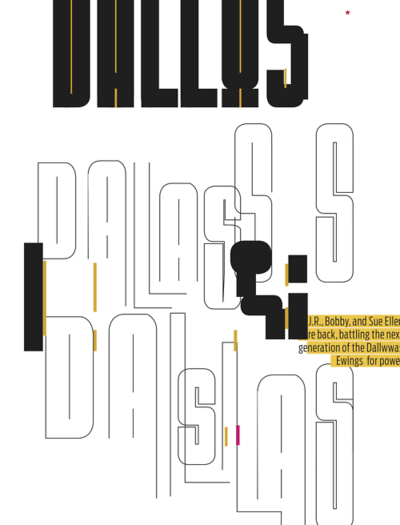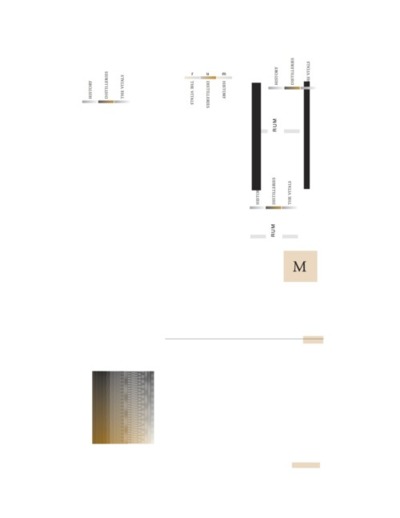I had more the feeling like, the world was becoming a big pile of garbage. And whenever I would express myself lyrically, even if it was fun, I was adding to a great big mountain of garbage. And so this made me eventually want to do other things — like quotation, using what was already there, in some way. Or else, just make noise.
I’m a great fan of Marc Ribot, and while his work is clearly anything but garbage, I’ve enjoyed this little ramble of his since I encountered it a few years ago by way of the documentary Marc Ribot: La Corde Perdue. Lately it’s been on my mind again. That’s partly because of a newish site called The Debris Project. And partly because of a line of thought I started in an earlier post and never finished.

From The Debris Project.
First: The Debris Project. I don’t want to make too big a deal about this, because it’s pretty modest at this point: basically, a Tumblr where a couple of designers are sharing “failed design explorations pushed off to the side of our layouts and sitting on the pasteboard.” The idea is these failures can be interesting to look at. I agree. It looks like the site is also soliciting “guest debris art.” Could be cool; we’ll see.
For now it’s a good prompt for me to finish that earlier line of thought. At the end of a post here on the subject of “dancing about architecture,” I suggested that the concept struck me as delightful — but I also suggested another concept that strikes me as even more delightful: dancing about ruins. I promised to try to explain what I meant by that at some point. We are now at that point.
I’ve already defined “dancing about architecture” away from its more familiar meaning (an insult suggesting a pointless activity, most commonly directed at music critics) and toward the possibility of creativity itself as muse: ekphrasis, art about art, etc. One can easily connect this to remix culture — what better way to make art about art than to make art with other people’s art? But so many cultural observers have zigged toward variations on that exact theme lately that I find it more productive to zag.
So back to Ribot’s mountain of garbage: When he mentions “quotation, using what was already there,” he’s using language that remix-culture enthusiasts embrace. But twist it a little. Instead of art about art, how about art about junk? How about creativity inspired by overlooked detritus? How about making something from what had appeared to be nothing? How about acknowledge that the great, big mountain of garbage is “part of what’s already there”? How about dancing about ruins?
Obviously I have some bias here, having played a role in projects inspired by thrift-store tchotchkes and neglected buildings and used possessions. And I’m often drawn to writing about projects that find, or create, value in what had previously seemed not even worth seeing — whether that’s vacant-retail signage or interaction-design placeholders or, well, typography efforts gone awry.
The attraction is that it seems both more difficult and more satisfying when “quotation” means plucking debris out of the mountain of garbage, and transforming it, redeeming it. This is what I am calling “dancing about ruins.”
The term is admittedly flawed. “Ruins” could obviously be attacked, given that I'm trying to get at things that are overlooked and undervalued, while some ruins are more venerated than as things-to-see than most architecture. (In a not-unrelated vein, Rick Poynor has argued here for "the unspeakable pleasure of ruins," offering comprehensive pro-ruinology in the course of criticizing the term "ruins porn." I'm sympathetic to that argument, and can only add that Susan Stewart's talk "The Ruins Lesson" — summary here, full talk here — is also useful on that subject. The point is I recognize "ruins" and "garbage" are not the same thing.)
Anyway, I'm certainly open to a better term. But for now, I think most readers will understand the gist of what I mean. It should be pretty obvoius that "dancing about ruins" is shorthand for something I’m still in the process of defining more clearly. For now, I'm making a list, considering examples large and small. (Suggestios welcome.) I think there's something useful, and maybe vital, in learning and celebrating new ways of seeing and mining that mountain of garbage — and, per Ribot, maybe making some really good noise as a result.

"Minimalist debris," Debris Project.


Comments [1]
http://www.triborodesign.com/index.php?article_id=2
And on Twitter, someone else has pointed out "Judy Hoffman's art made from detritus":
http://judyhoffman.info/section/52888_Ecosystems_Installations.html
05.05.12
10:53